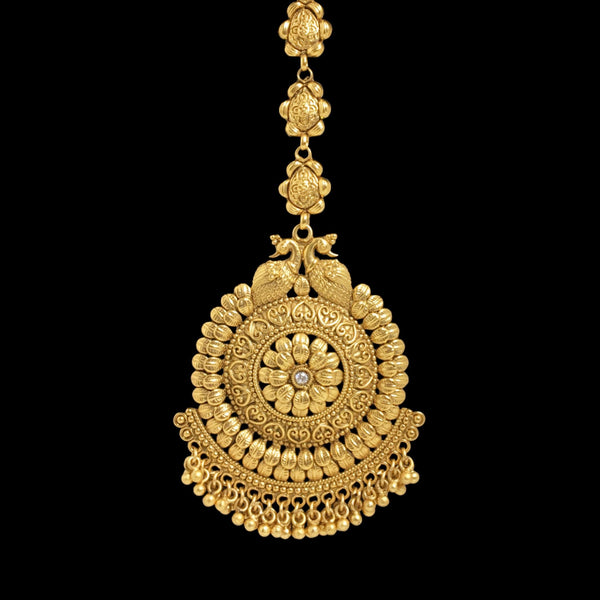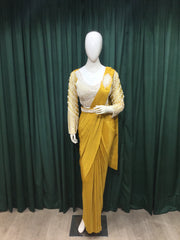What is called Maang Tikka in English?
Outline of the Article:
-
Introduction to Maang Tikka
- Definition and cultural significance
- Variations across regions
-
Historical Origins of Maang Tikka
- Origins in Indian tradition
- Evolution and symbolism over time
-
Designs and Types
- Different styles and materials used
- Popular motifs and gemstones
-
Maang Tikka in Different Cultures
- Similar accessories in various cultures
- Cross-cultural influences
-
Wearing and Placement
- Significance of placement
- Occasions and attire it complements
-
Maang Tikka in Modern Fashion
- Contemporary adaptations and trends
- Fusion with Western fashion
-
DIY and Crafting Maang Tikka
- Making your own Maang Tikka
- Popular DIY designs
-
Cultural Representation and Symbolism
- Rituals and ceremonies involving Maang Tikka
- Symbolic meanings in different contexts
-
Maintenance and Care
- Tips for preserving Maang Tikka
- Cleaning and storing suggestions
-
Celebrity Influence and Red Carpet Moments
- Notable appearances in the media
- Impact on popularizing Maang Tikka
-
Maang Tikka: A Symbol of Tradition and Elegance
- Bridging past and present significance
- Versatility in fashion statements
-
Ethical Concerns in Maang Tikka Production
- Sustainable practices in crafting
- Ethical sourcing of materials
-
Global Acceptance and Influence
- Maang Tikka's presence in the global market
- Adaptation in international fashion scenes
-
Maang Tikka: Beyond Adornment
- Emotional and cultural value
- Personal stories and sentiments attached
-
Conclusion
What is called Maang Tikka in English?

In Indian culture, a Maang Tikka holds a significant place as a traditional ornament worn by women. Derived from Hindi, "Maang" refers to the hair parting on the forehead, and "Tikka" translates to a decorative piece. This accessory, when translated to English, is often referred to as a "Forehead Ornament" or a "Forehead Pendant."
This adornment, embedded in rich cultural heritage, transcends its name to embody elegance and tradition. Let's explore the depth and allure of the Maang Tikka.
Introduction to Maang Tikka

The Maang Tikka is a cherished piece of jewelry worn primarily by brides in India. It holds cultural significance, signifying the union of two souls in marriages and symbolizing the third eye, representing wisdom and awakening.
Historical Origins of Maang Tikka

This ornament finds its roots deeply embedded in ancient Indian tradition. Initially, it was a symbol of marital status, evolving over time to become a fashion statement while retaining its symbolic importance.
Designs and Types

Maang Tikkas come in diverse designs, crafted using various materials like gold, silver, and adorned with precious gemstones. Intricate motifs and styles vary across regions and occasions.
Maang Tikka in Different Cultures

Interestingly, similar accessories exist in other cultures, albeit under different names, showcasing the cross-cultural influence and universality of forehead ornaments.
Wearing and Placement

The placement of a Maang Tikka is crucial. It enhances the bride's beauty and elegance, typically worn on special occasions like weddings, festivals, or cultural celebrations.
Maang Tikka in Modern Fashion

In contemporary times, Maang Tikkas have transitioned to blend seamlessly with modern fashion, even gaining popularity in Western attire as a statement piece.
DIY and Crafting Maang Tikka

For enthusiasts, creating a Maang Tikka can be a delightful DIY project, experimenting with various designs and materials to match personal style.
Cultural Representation and Symbolism

Beyond aesthetics, Maang Tikkas hold symbolic importance, often incorporated into rituals and ceremonies, signifying prosperity and well-being.
Maintenance and Care

To preserve the allure, proper maintenance and care are necessary. Cleaning and storing tips ensure the longevity of this cherished ornament.
Celebrity Influence and Red Carpet Moments

In the world of fashion and entertainment, Maang Tikkas have made striking appearances, influencing trends and fashion statements globally.
Maang Tikka: A Symbol of Tradition and Elegance

This accessory gracefully bridges tradition and modernity, epitomizing elegance and cultural heritage in a single adornment.
Ethical Concerns in Maang Tikka Production

With growing consciousness, ethical sourcing and sustainable practices have gained attention, ensuring the ethical creation of Maang Tikkas.
Global Acceptance and Influence

The allure of Maang Tikkas has transcended borders, finding its place in the international fashion arena, adapting to diverse global tastes.
Maang Tikka: Beyond Adornment

Beyond its ornamental value, the Maang Tikka holds emotional and cultural significance, weaving personal stories and sentiments.
Conclusion
In essence, the Maang Tikka isn't just a piece of jewelry; it's a cultural icon representing tradition, elegance, and timeless beauty. Its journey from ancient traditions to modern fashion speaks volumes about its significance and allure.
FAQs
-
What occasions are suitable for wearing a Maang Tikka?
- Maang Tikkas are commonly worn at weddings, festivals, and cultural celebrations.
-
Can men wear Maang Tikkas?
- While it's primarily worn by women, some men do sport variations of forehead ornaments in certain cultural contexts.
-
Are there specific rituals related to wearing Maang Tikka?
- In weddings, the placement of the Maang Tikka often symbolizes the bride's marital status and signifies blessings for her married life.
-
What materials are commonly used to make Maang Tikkas?
- Gold, silver, and various gemstones like pearls, diamonds, and emeralds are frequently used.
-
Are Maang Tikkas only popular in India?
- While rooted in Indian culture, Maang Tikkas have gained popularity globally, transcending cultural boundaries.




















































